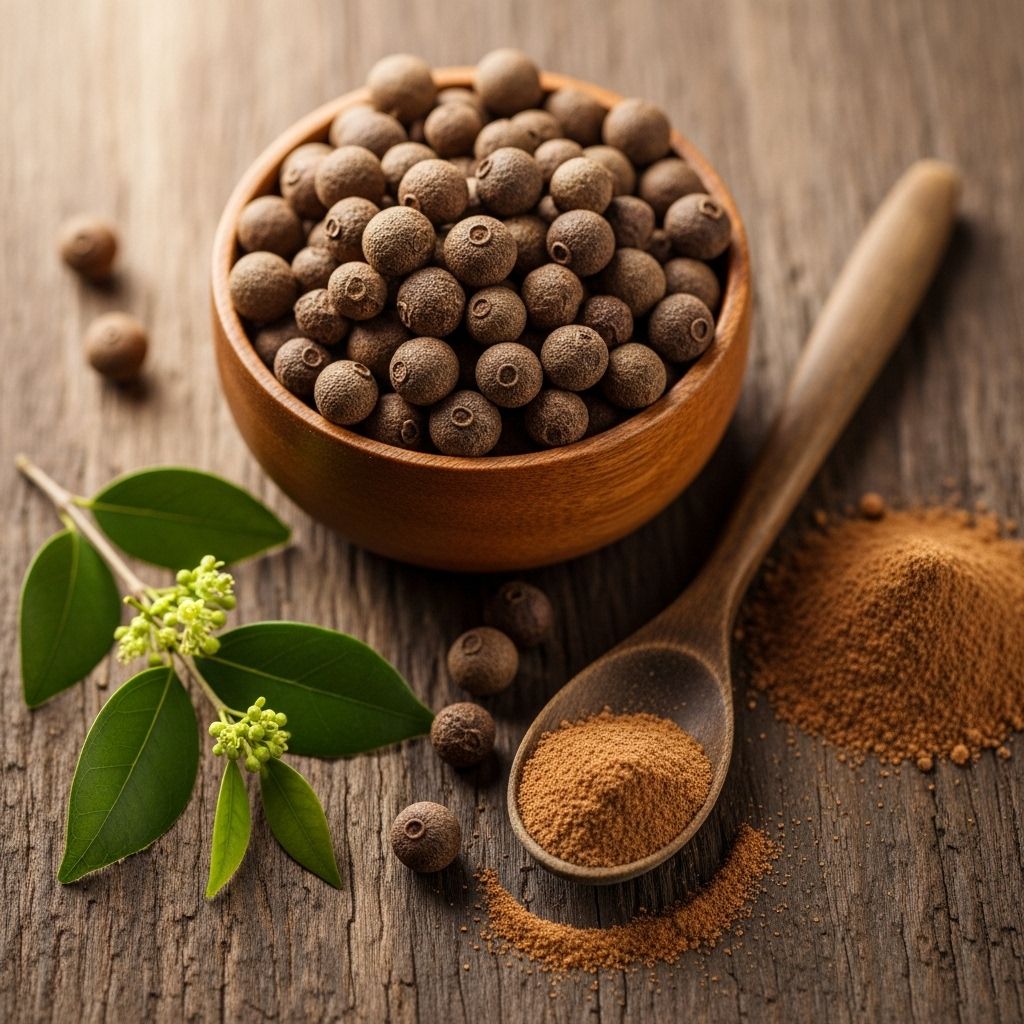Unveiling the Flavors of Allspice: Benefits, Uses, and Taste
Exploring the Depth of Allspice in Global Cuisine

Table of Contents
- What is Allspice?
- Origin and Production
- Uses of Allspice
- Taste and Flavor Profile
- Benefits of Allspice
- Substitutes for Allspice
- Frequently Asked Questions
What is Allspice?
Contrary to its name, allspice is not a blend of various spices but a single spice derived from the dried, unripe berries of the Pimenta dioica tree, native to the Caribbean and parts of Central America. These berries are often mistaken for peppercorns due to their dark brown color and smooth texture. The name “allspice” was coined by English explorers who noted that the spice’s flavor combines the warmth of cinnamon, nutmeg, and cloves.
Origin and Production
Allspice is mainly produced in Jamaica, where it is renowned for its high oil content and superior flavor compared to varieties grown elsewhere in the Caribbean and Central America. The berries are harvested when green and unripe, then dried in the sun or using other drying methods to preserve the volatile oils that contribute to its distinctive flavor. Fresh leaves from the Pimenta dioica tree are also used in cooking, similar to bay leaves, and the wood is utilized for smoking meats.
Uses of Allspice
Allspice is incredibly versatile and is used in a wide range of dishes across different cuisines. It is a key ingredient in Jamaican jerk seasoning, often paired with meats like chicken, pork, and fish. Additionally, it is used in pickling spice mixes, soups, stews, and curries. Ground allspice is a staple in baked goods such as pies, cakes, and cookies, while whole berries are used in infusions like mulled wine and spiced teas.
Traditional and Modern Recipes
Traditionally, allspice is found in spice blends like the Ethiopian Berbere and Middle Eastern Baharat. It adds depth to dishes like Swedish meatballs and pickled herring. In modern recipes, allspice can be used to enhance salads, marinades, and even hot chocolate.
Taste and Flavor Profile
Allspice has a warm, aromatic flavor that is often described as a combination of cinnamon, nutmeg, and cloves. However, the dominant note is typically that of cloves, with undertones of sweetness and warmth. Its flavor profile makes it a popular addition to both sweet and savory dishes.
Benefits of Allspice
Beyond its culinary appeal, allspice offers several potential health benefits. It is rich in antioxidants and has anti-inflammatory properties. Eugenol, a compound found in allspice, is known for its medicinal uses, including as a natural pain reliever and antiseptic.
Substitutes for Allspice
For those who cannot access allspice, blends of cinnamon, nutmeg, and cloves can serve as substitutes. However, since allspice provides a unique flavor profile, these substitutes may not fully replicate its taste.
Frequently Asked Questions
Q: Is allspice a blend of spices?
A: No, allspice is not a blend of spices; it is a single spice obtained from the berries of the Pimenta dioica tree.
Q: Where is allspice primarily produced?
A: Allspice is primarily produced in Jamaica, known for its high-quality allspice.
Q: How do I use ground versus whole allspice?
A: Ground allspice is commonly used in baking and spice blends, while whole berries are ideal for infusing flavor into liquids or using in pickling recipes.
Q: Can I substitute allspice with other spices in recipes?
A: While a blend of cinnamon, nutmeg, and cloves can mimic the flavor of allspice, it will not perfectly replicate its unique taste.
References
- https://www.slofoodgroup.com/blogs/recipes-stories/the-complete-guide-to-allspice
- https://www.linsfood.com/what-is-allspice-jamaica-pepper/
- https://en.wikipedia.org/wiki/Allspice
- https://www.youtube.com/watch?v=6P621QXw8BQ
- https://www.britannica.com/plant/allspice
- https://www.merriam-webster.com/dictionary/allspice
- https://www.masterclass.com/articles/what-is-allspice-how-to-cook-with-allspice-and-homemade-allspice-substitute-recipe
Read full bio of medha deb












